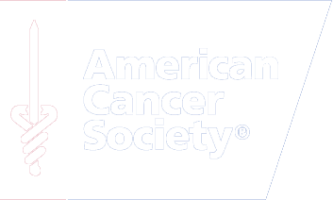Breast Health Resources
Breast Health FAQs
Mammogram remains the single best tool for breast cancer screening. Many medical societies, recommend screening mammograms starting at age 40, and continuing yearly or every other year depending on personal risk for breast cancer. For some women at average risk, mammograms may be started sometime between age 40-50 years old, and be performed annually or every other year. For higher risk women, mammograms should start at age 40 and occur annually. If something is found on exam or mammogram, then ultrasound may be used to look at that finding a little further. And if someone is very high risk for breast cancer, sometimes an MRI may be ordered.
Mammograms themselves do not prevent cancer, but allow us to detect cancer at an early stage, when it’s most treatable.
1 in 8 women currently get breast cancer in their lifetime, which makes the risk of breast cancer in the general population 12.5%. There are many risk factors, some of which are modifiable and others which are non-modifiable or genetic. The major risk factors include the following:
- Age – Breast cancer is most common in postmenopausal women after the age of 60
- Family history of breast cancer in a mother, sister or daughter, especially if it occurred before the age of 50. Or family history of male breast cancer or ovarian cancer.
- Early age of onset of menstrual cycles (before age 10)
- Going through menopause later in life (after age 55)
- Late childbearing – The older the age a woman has her first child, the higher the risk of breast cancer.
- Usage of combination hormone replacement therapy in a postmenopausal woman for more than 5 years.
- Lack of physical activity – Studies are showing evidence to support physical exercise reduces the risk of breast cancer.
- Alcohol consumption –The American Cancer society recommends that women have no more than 1 alcoholic drink per day.
No. The way your breasts are touched and what you wear does not impact your risk for breast cancer.
Most lumps are actually due to benign, noncancerous changes, such as normal dense breast tissue, cysts or other benign growths. Physicians want to know about any new lump you feel so that we can make sure it is not cancer.
There are different kinds of cysts that can form in the breast. Cysts are very common and rarely turn into cancer. Most cysts are benign and do not need specific follow up, but some cysts have characteristics that may require close follow up and even possible biopsy. If you have had benign cysts in the past and you have a new lump, do not assume it is just another cyst, you should have it checked by your doctor.
The most common symptom is a new lump or mass. Other symptoms include a change in the size or shape of the breast, skin irritation, dimpling, redness or rash, breast or nipple pain, new onset of nipple inversion (nipple turns inward into the breast), clear or bloody nipple discharge.
Most of the time cancer does not cause pain. Pain in the breast is often from our normal dense breast tissue, or can be caused by a cyst or other benign mass in the breast. Breast pain can be cyclical and very commonly related to your menstrual cycle. If you have breast pain that persists and does not resolve after your menstrual cycle is over, tell your doctor.
5-10% of all breast cancer is due to a genetic mutation that can be passed down in a family. You have genes passed down from both your father’s side and your mother’s side, so assessing your complete family history is important. If you have first or second degree family members who had breast cancer younger than 50 years old, or if you have multiple first or second degree family members who have had breast or ovarian cancer, you may qualify for genetic testing. Your doctor can assess your personal risk of breast cancer, and if your risk of breast cancer is greater than the general population, you may qualify for high risk screening and should see a breast surgeon for surveillance.
BRCA 1 and BRCA 2 are genes that can have a mutation present that puts people at significantly higher risk of breast, ovarian, prostate and pancreatic cancer. Women with a BRCA mutation are more likely to get cancer at younger ages than the general population. There are other genes in addition to BRCA that we are now learning also put people at higher risk of various cancers, so when appropriate genetic testing can be done by testing a larger panel of genes, which include both BRCA 1 and BRCA 2 in addition to these other genes.
Research so far has not shown that surgery causes cancer or causes cancer to spread. After surgery, we may find that the cancer is larger than initially thought, but this is not due to growth. It is due to our ability to now look at the tumor on a microscopic level and get an accurate measurement. A 2004 study found no increase of spread of cancer among patients who underwent needle biopsy, and needle biopsies are a less invasive way diagnose an abnormality in the breast. With the correct diagnosis, the correct surgery and treatments can then be planned.
Women with implants are at no greater risk for developing breast cancer and mammograms can be done for women with implants.
Although developing breast cancer after a mastectomy for treatment of breast cancer is very rare, it can happen. Statistically, there is no difference in recurrence of breast cancer if you have a lumpectomy and radiation compared to a mastectomy.
Mastitis happens most often in breastfeeding women, but can happen at any age. Immediate medical attention is important. If the mastitis does not improve with antibiotics, further work up may be necessary to rule out inflammatory breast cancer.
The margin refers to the distance between the cancer and the edge of the lump of tissue that was removed. The goal during a lumpectomy (or partial mastectomy) is to remove the cancer with a small rim of normal surrounding tissue to be sure it is all out (or that you have a “negative margin”). For an invasive cancer, the goal is to make sure the cancer cells are not touching the edge of what was removed. For noninvasive cancer (ductal carcinoma in situ) that does not have any invasive disease associated, the goal is to have 2 mm of normal tissue surrounding the cancer cells.
In the setting of an invasive breast cancer it is often important to be sure no cancer cells have spread to the axillary lymph nodes (the lymph nodes that are under your armpit). The breast naturally drains to the “sentinel” node, which can be one, two, three, or even four lymph nodes depending on the person. From those nodes, the drainage will go to the rest of the lymph nodes under the arm. By removing only the sentinel lymph node(s) we can be sure the cancer has not spread and yet minimize problems that can arise when removing all of the lymph nodes under the arm.
Studies have shown that the rate of recurrence of breast cancer is equal for women who have a mastectomy compared to women who have a lumpectomy (or partial mastectomy) and radiation.
Helpful Links
- Advanced Breast Cancer
- American Society of Clinical Oncology: People living with cancer
- Bay Area Young Survivors
- Breast Cancer Prevention Partners
- Breast Cancer Recovery Foundation
- Cancer Support Community
- Live Beyond Breast Cancer
- Lymphedema Network
- Needy Meds
- Sandra J. Wing
- Young Survival Coalition








